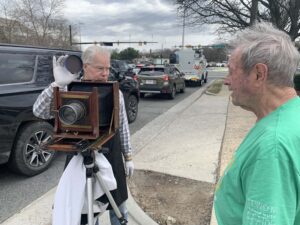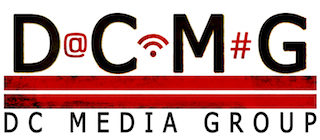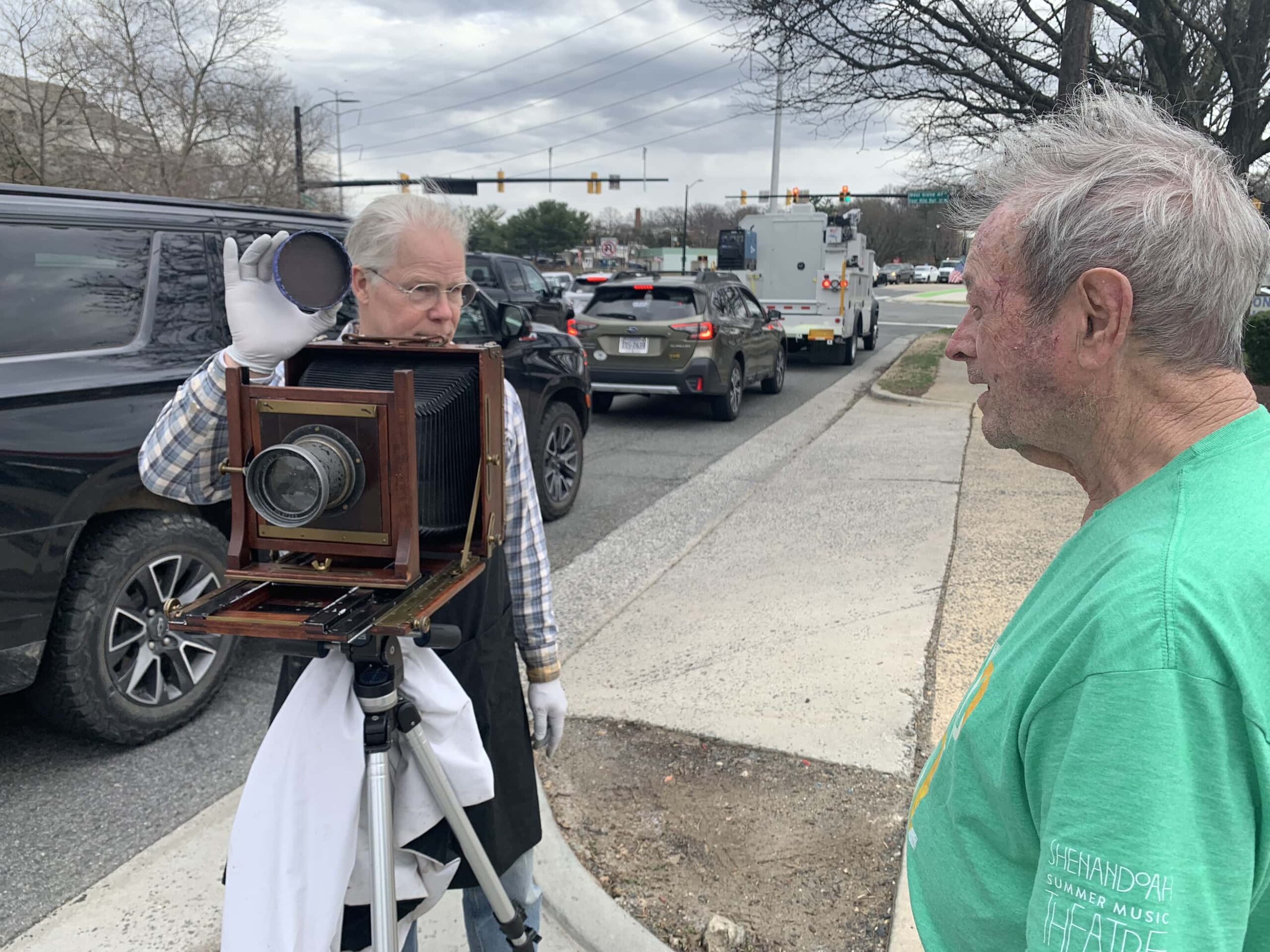
Arlington, Virginia—Its 4:15 on Tuesday afternoon in front of the Tesla dealership on South Glebe Road and the sidewalk is already lined with nearly 70 cheering for passing motorists to boycott Tesla electric vehicle dealerships. More keep coming with their odd assortment of signs, and spirit. They have been coming to the dealership for a solid 6-weeks as an opposition response to Elon Musk’s butchering of Federal Government agencies, taking down or dismantling government functions, capturing terabytes of classified information, and illegal firing of tens of thousands of Federal employees.
The numbers are still growing each week as more Tesla boycott stalwarts join the boisterous line waving signs and cheering for motorists to honk their approval. Many honk as they pass but some occasional thumbs down also pass by. They don’t blow their horns.
There’s nothing uniform about the odd collection or sidewalk collaborators condemning the Trump-Musk government takedown. There are retirees, youth, a lawyer, business professionals and union workers, Federal workers, single mothers, an elderly woman in her 80s sitting in a folding chair barely able to stand, someone with an LGBTQ flag, another carrying a Black Lives Matter sign, and a man wearing a gold Guy Faulks mask. About the only uniformity among these concoctions of resistors is a desire to see Elon Musk taken down the way he’s taking down the order of their government and their financial futures.
About 40 feet away a man has set up an ancient wooden box camera on a modern metal tripod that looks like it could have been used to photograph the completion of the transcontinental railroad at Promintory Summit in 1869. Mac Cosgrove-Davies is hunched under a thick blanket hood sliding a silver nitrate covered metal plate into a slot and readying to expose it to light for a moment. He removes the lens cap and then replaces it. He leaves his camera set up on the sidewalk as he takes the plate to a nearby table on which he will develop it.
He lays the metal plate into a series of three square plastic containers and within minutes a black and white image appears on its white surface. He observes it a moment and then places it in a container of water to rinse off the chemicals. It’s a bit dark—possibly over-exposed. The light this afternoon is dim and it is a cloudy day after all, so maybe it wasn’t over exposed as much as it just a dark day.
The finished image is a reversal of the real life scene playing out before the camera. It’s a metaphor for the sequence of events in society over the past two months. Nothing seems to be anything like it was.
He uses no meters and no electric devices. The entire process is all analog and the resolution of the photographs he develops is infinite. The finished photographs even capture the blurry movement of those in the boycott line as they wave their signs and move about, an aspect that is impossible to capture with today’s digital technology.
Part artisan, chemist, and historian, and a throwback photographer from an era long past, he explains the chemistry behind the process commonly used between the 1850s and 1870s while he prepares another plate for exposure. He pours a strong mixture containing ether onto an aluminum metal plate while holding it flat in one hand and waits a minute until it sets. It’s known as the collodion wet plate process and it must be completed within 15 minutes. So he works from a portable dark room out of the back hatch of his car.
He goes into a detailed description of how the process works, describing the chemicals used and the history behind them.
“Once this collodion starts to set I’m gonna put this plate into a bath of silver nitrate. So there are hallides salted into the collodion and the silver from the silver nitrate is gonna join with the hallides and that becomes a silver hallide which is light sensitive,” he says, finally.
The Tesla boycott actions are crossing over to the mainstream as evidenced by the comming of folks like Cosgrove-Davies to record the boycott line. He has travelled to document the movement of the people. He explains that he has been using this ancient technique known as the collodion wet plate process to create images for many years but decided to begin documenting the resistance ever since the U.S. Agency for International Development was shutdown by Musk and his so-called Department of Government Efficiency acolytes.
He says that one image of about the size of a large postcard, about 6”x 8” costs about $5 by itself to create without adding in the cost of the camera and other equipment he needs to develop the collodion wet plates. He does portraiture for about $100 per plate which enables him to continue his craft, but with this project he is documenting an historic moment which will be over sooner than later. And he’s here for it.
A Tesla salesman comes up to him from inside the electric vehicle car business and politely asks him to move his camera from the driveway entrance as he fears someone may knock it over. Its the first time anyone has come outside to speak to anyone involved in the boycott actions.
Nearby many on the boycott line snap instant digital color images from their built in cellphone cameras, completely oblivious to the artisian-chemist-photographer at work nearby. He’ll have taken and developed a series of four photos with his camera from a bygone era while the others will have taken dozens of photos and videos in minutes. They’ll upload their digital images to social media platforms. He’ll have images that capture the movement of the people and their movements in real time in black and white.





